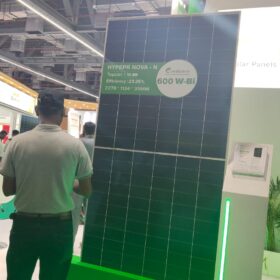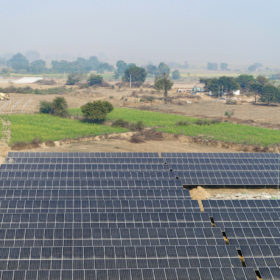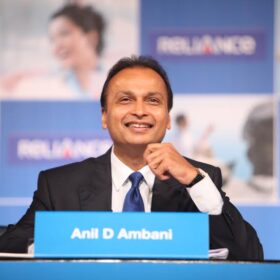pv magazine: How big is the potential for solar mini-grids in India? Which load sizes and applications do these make more sense for?
Jaideep Mukherjee: The mini-grid sector has played a critical role in providing access to reliable electricity in rural India. The reliability of electricity enhances not only productive use but also spurs micro-enterprise activities in villages. Despite universal electrification of villages and households, there is still a major gap between demand and supply characteristics.
SPI has been working to improve healthcare infrastructure and create socio-economic opportunities for rural and micro-entrepreneurs. As of now, electricity from the 300+ renewable energy grids supported by us has reached 432 villages and has helped in transforming the lives of over 337,473 people.
The solution for electrifying most of rural India lies in mini-grids with 15-100 kilowatts of peak power, enabled by storage that can electrify 100-140 households, 50-60 shops, and a mix of productive users.
Is the awareness level enough to get consumers connected? How can adoption be improved?
Before the pandemic, more than 800 million people worldwide used to lack access to electricity. The pandemic has pushed billions to the brink of losing their electricity access since they were unable to pay their bills. This toll fell disproportionately on the poor and most vulnerable.
Communication is crucial for mini-grids to influence demand, overcome barriers, communicate benefits, and recruit clients. Structured communication can facilitate awareness and education about the benefits of mini-grid adoption.
In recent years, effective communication has evolved from haphazard awareness-raising activities to systematic, evidence-based behavior change communication strategies.
Energy service companies (ESCOs) must develop a communication plan for mini-grid initiatives that addresses individuals, homes, and the community independently in order to encourage behavior changes.
SPI has been working to improve adoption through community action. We have worked with Women Self Help Groups, who have immense understanding of the villages they live in and the issues they face.
One of the ways women have played an integral role in providing reliable power is by performing billing and collection duties, as seen on the Model Distribution Zone (MDZ) Program in the Paradeep division of Odisha. In this program, ‘Bijuli Didi’s’ were recruited, thereby increasing customer satisfaction and also generating livelihoods.
A total of 160 rural women were employed as bill connection associates with a potential monthly income of INR 8,000.
What are the other major barriers to mini-grid implementation? How big a problem is the availability of technical skills from implementation to operation?
Though the mini-grid sector has been making huge strides in India, there remains uncertainty about policy regulations such as downstream infrastructural subsidies and clear financial frameworks for implementation.
Mini-grid developers face high costs as mini-grids are established in villages with low education levels and low operational efficiency of manpower.
Also, when the electricity demand is low, the plant is inefficiently used. The low demand also results in a higher tariff burden for consumers.
Due to ineffective feed-in tariffs and ambiguous terms of sale, the numerous actions available when the grid arrives, such as selling power to the grid or purchase by the DISCOM, may prove less efficient.
Furthermore, mini-grids in India still lack specially designed technological components. Inverters used in Indian mini-grids, for example, are not designed for this application. Furthermore, imported components, such as smart meters, are exorbitantly priced due to import fees and customs duties.
How can the cost be minimized for mini-grid implementation as these projects are relatively small in scale?
Mini-grids—smaller off-grid electricity distribution networks—are being recognized as a cost-effective solution to bring power to rural communities that often lack access to a traditional power grid.
Solar mini-grids have a considerably lower initial investment than traditional electricity sources such as thermal or coal facilities. On the other hand, the latter benefits from enormous economies of scale and has a longer lifespan. As a result, the levelized cost of electricity (during their lifetime) is significantly lower than that of solar.
It’s critical to concentrate on technological advancements like improved batteries, energy-efficient products, and low-cost mini-grid components. These will lower the initial investment and speed up the adoption of mini-grids.
Standardization, metering, automated billing and collection, and inverter and charge control electronics helped improve mini-grid component integration.
Smart Power India has developed a set of services to support energy-based microenterprises like irrigation units, oil expellers, rice hullers, water treatment at the village level as part of the Micro Entrepreneurship Development (MED) program. With access to reliable power, these enterprises are likely to employ relatively expensive and sophisticated appliances for productive purposes, which, in turn, helps in increasing power demand.
The market has seen emergence of many off-grid solar players? What role do they have to play other than just providing solar solutions?
In a country where 70% of the population lives in rural areas and has a 3.2-crore micro-entrepreneurs base, ensuring the sustainability of rural electricity supply down to the last mile remains a major challenge. More than half of the population lacking reliable energy access lives in the States of Uttar Pradesh, Bihar, Odisha, West Bengal, and Madhya Pradesh.
Reliable energy access encourages micro-enterprises to opt for off-grid resources like micro or mini-grids. Some businesses meet their energy needs with fossil fuels such as diesel and kerosene. Such businesses willingly switch to cleaner electricity sources when subsidized fuel is no longer available to meet lighting needs or power high-wattage motor loads.
Off-grid solar players have innovated business models to drive energy demand by handholding and enabling local enterprises to scale up. The business model encourages trust-building between enterprises and energy service companies by understanding their energy needs and offering reliable solutions for business growth.
When local business owners achieve scale in their operations, it leads to increased energy demand and economic activity in the area. Mentoring from off-grid solar companies aids in the modernization and expansion of operations by facilitating marketing connections and entrepreneurial skill training.
Many benefits accrue to businesses due to mentoring, including up to a 50% increase in productivity, business expansion, increased household income, and, even more importantly, livelihood opportunities for the local community. Then there are benefits to energy companies in terms of ensuring increased and stable demand for their power.
How do mini-grids prove their relevance in a scenario where standalone solar systems (pay-as-you-go) become more accessible and feasible? Do you see mini-grid defection happening?
Typically, there are two types of solar power plants—off-grid and grid-connected.
An off-grid system, popularly known as a standalone solar electrical system, is the main energy source in areas where no source of electricity is available. The main advantage of this system is that it does not depend on the grid or any other source of electricity.
A storage battery system acts as an essential component in providing electricity at night. Popular examples of the standalone solar system are solar lanterns, solar home lighting systems, and solar water pumping systems.
In recent years, several energy service companies, especially in East Africa, have appeared on the market, combining pay-as-you-go concepts with the sale of photovoltaic systems or electricity produced by these devices. Usually, this results in one-time installation costs and weekly/monthly payments.
When properly planned, an off-grid home solar system is an excellent cost-saving feature that can pay back the initial investment through electricity bill savings within the first five years of operation. However, when designed with revenue generation in mind, a grid-connected home solar system can be both a cost-saving feature and a revenue-generating system.
This content is protected by copyright and may not be reused. If you want to cooperate with us and would like to reuse some of our content, please contact: editors@pv-magazine.com.









3 comments
By submitting this form you agree to pv magazine using your data for the purposes of publishing your comment.
Your personal data will only be disclosed or otherwise transmitted to third parties for the purposes of spam filtering or if this is necessary for technical maintenance of the website. Any other transfer to third parties will not take place unless this is justified on the basis of applicable data protection regulations or if pv magazine is legally obliged to do so.
You may revoke this consent at any time with effect for the future, in which case your personal data will be deleted immediately. Otherwise, your data will be deleted if pv magazine has processed your request or the purpose of data storage is fulfilled.
Further information on data privacy can be found in our Data Protection Policy.